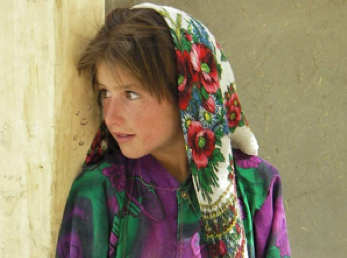By Natasha Udu-gama, TEX Senior Specialist
The American Geophysical Union’s mission is to promote discovery in Earth and space science for the benefit of humanity. About five years ago, our senior leadership acknowledged that our members were great at doing the first part of this mission – making discoveries in a wide array of scientific disciplines – but needed more support getting their research out in ways that could tangibly and constructively benefit the lives of all.
Thriving Earth Exchange (TEX) was launched to provide that support. TEX leverages AGU’s membership to work with communities on the latter’s priorities on climate change, natural hazards and natural resources. Starting as a challenge platform initially, we evolved to our current model of connecting with community facing partners, talking to community leaders about their priorities, developing feasible projects with them that could use the expertise of an Earth or space scientist, facilitating a connection and seeing a project toward a successful and impactful solution. With more than 75 projects started, ongoing and completed, the TEX process works.
By focusing domestically initially, we were able to test, learn and refine our process. We learned that one-on-one project development worked; that facilitating projects from inception to implementation benefitted all teams; and that organizational partnerships helped us identify communities with the capacity for and interest in working with a pro bono scientist.
Yet, we only tentatively dipped our feet beyond our borders. Our first foray was a partnership with communities in the Pamir Mountains of Afghanistan and Tajikistan to provide scientific assistance in the recalibration of their calendars of the human body – a traditional agro-pastoral practice lost to the social upheaval that affected the region for decades – to changes in climate. Ensuing international projects in Sri Lanka and Ethiopia resulted from my own pre-existing contacts and inquiries.
These initial attempts at doing TEX internationally had mixed results, and we learned a few key lessons:
- Develop a good relationship with an international ‘community facing’ partner with an interest in scientific application and capacity to work with a scientist.
- From the start, involve the community leader who will work with the selected scientist.
- Ensure that the team has clear and consistent means of communication.
TEX’s AGU Centennial goal is to reach 100 partnerships by 2019. With more than 75 currently, we’re well on our way to achieving that. Of those, we expect at least nine to be international projects.
In early 2018, we launched our first TEX project in the Caribbean – a local Montego Bay, Jamaica startup will work with a Nigerian soil scientist by way of New Jersey to determine the best way to turn food and animal waste into organic fertilizers and develop an awareness raising campaign for local farmers and hotels.
Given the lessons we’ve learned, we’re optimistic that these gently cultivated relationships will eventually provide us more traction in their respective regions and beyond.
If you’re an AGU scientist based outside of the United States, what is your experience doing community science? Please tell us!
If you’re a community leader outside of the United States, what are you most concerned about? If you think that your concerns could benefit from the expertise of an Earth and/or space scientist, please fill out our online application.
If you lead a network of communities outside of the United States, and you’re interested in how TEX could support one or more of your communities to work with a scientist, please contact us at [email protected].

